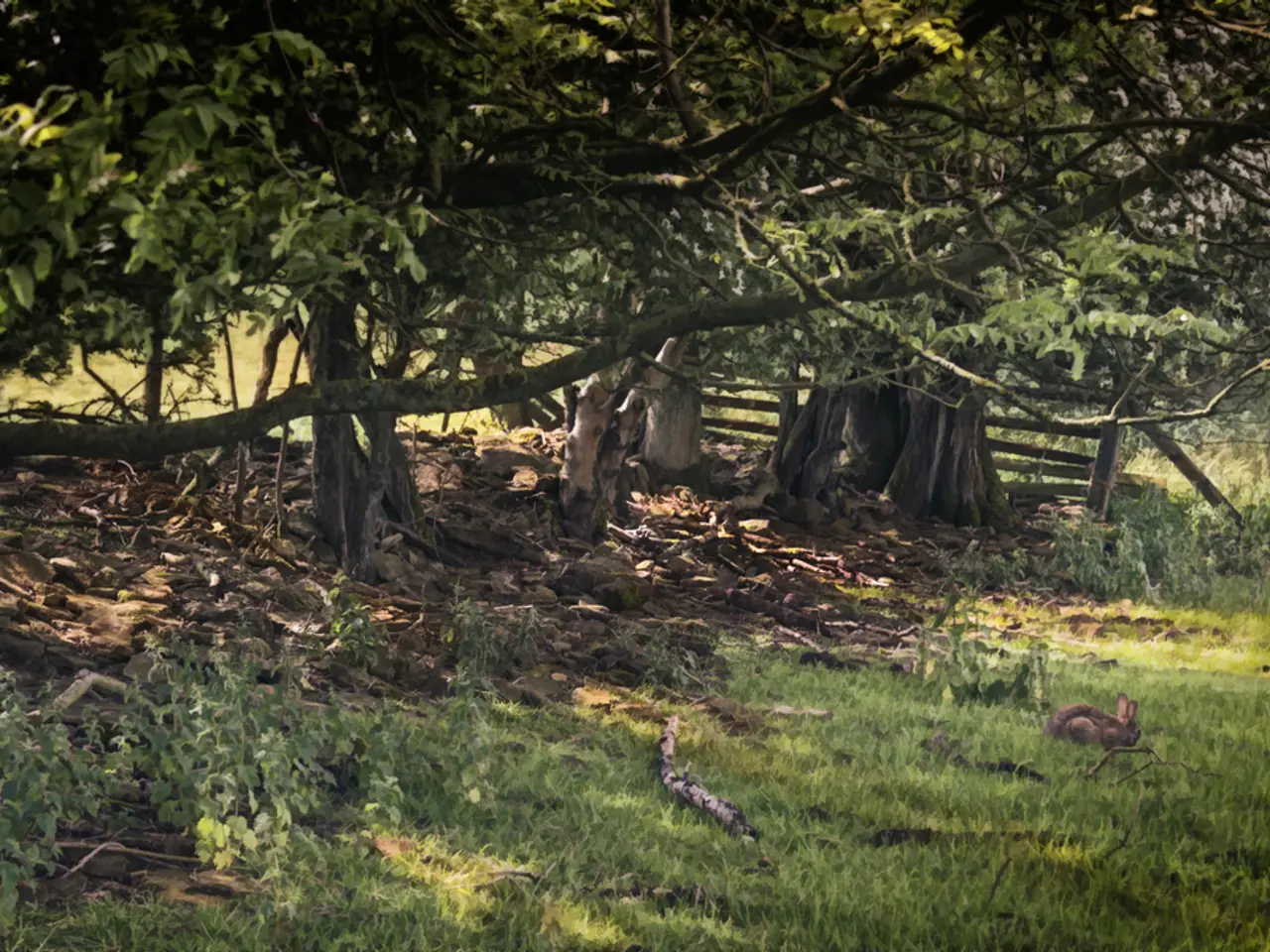Effortless and Intelligent Garden Method: Producing More with Minimal Work Using No-Dig Technique
Bonnie Ferrero, a passionate hiker, cook, gardener, and home decorator, shares her insights on no-dig gardening, a holistic approach to growing plants that promotes service, growth, and well-being.
No-dig gardening is a method that works with nature, minimizing soil disturbance and relying on organic materials to create healthy, nutrient-rich soil. Gardeners lay down a layered system, starting with cardboard or newspaper to suppress weeds, followed by manure, mulch (such as leaves or grass clippings), and finally compost on the surface. This method mimics natural processes, protecting soil life and allowing nutrients to recycle through decomposition on the surface.
Compared to traditional gardening, no-dig gardening offers several key benefits. It improves soil health by preserving soil structure and the microbial life within it, reduces weed growth, enhances moisture retention, builds nutrient-rich soil over time, and is more sustainable and eco-friendly.
While traditional gardening techniques involving digging or double digging can rapidly address soil compaction and evenly distribute nutrients, no-dig may take longer to achieve or struggle in poor soils. Some research notes that traditional cultivation allows immediate planting, while no-dig may require several months for the layers to settle before planting.
Despite these considerations, no-dig gardening replicates natural forest floor processes, fostering healthy soil biology and sustainable plant growth with minimal disturbance compared to traditional digging methods. It is especially popular for kitchen gardens growing vegetables, herbs, and some flowers.
Starting a no-dig garden is simple and rewarding. Fresh layers of compost or mulch should be added each season to nourish the soil and keep weeds at bay. Although no-dig gardening fosters strong, resilient plants, it doesn't eliminate garden pests entirely, so monitoring for insects and critters will still be necessary.
Gathering enough compost and mulch can require some effort upfront, but the investment pays off in healthier, more productive soil. Patience is key in no-dig gardening, as the soil structure and fertility improve gradually over time. Seeds or seedlings can be planted directly into the layers of organic matter.
No-dig gardening means less physical labor for the gardener, as one only needs to layer organic materials, plant directly into them, and watch the garden flourish with minimal effort. The thick layers of compost and mulch act as a barrier against weeds, reducing the time spent pulling them out. The layers also help retain moisture, meaning the garden stays damp longer and requires less watering.
In no-dig gardening, layers of organic matter like compost, straw, and mulch are built on top of the ground. Without digging, the soil remains stable, reducing erosion and keeping nutrients where they belong. Over time, the layers will decompose into a nutrient-rich growing medium.
No-dig gardening is a smarter, more sustainable way to grow that helps create thriving, low-maintenance gardens while improving the health of the soil. It's an easy and approachable method that anyone can embrace, whether you're a seasoned gardener or just starting out. So, why not give no-dig gardening a try and see the benefits for yourself?
- Bonnie Ferrero, a passionate gardener, shares her insights on no-dig gardening, a method for growing plants that imitates natural forest floor processes and promotes healthy soil biology.
- In no-dig gardening, layers of compost, straw, and mulch are built on top of the ground to create a nutrient-rich environment for plants.
- No-dig gardening offers several benefits, including reduced soil disturbance, improved soil health, and decreased weed growth, among others.
- The layers in no-dig gardening mimic natural processes, protecting soil life and allowing nutrients to recycle through decomposition on the surface.
- Despite some initial effort gathering compost and mulch, no-dig gardening requires less physical labor, as one only needs to layer organic materials and plant seeds or seedlings directly into them.




